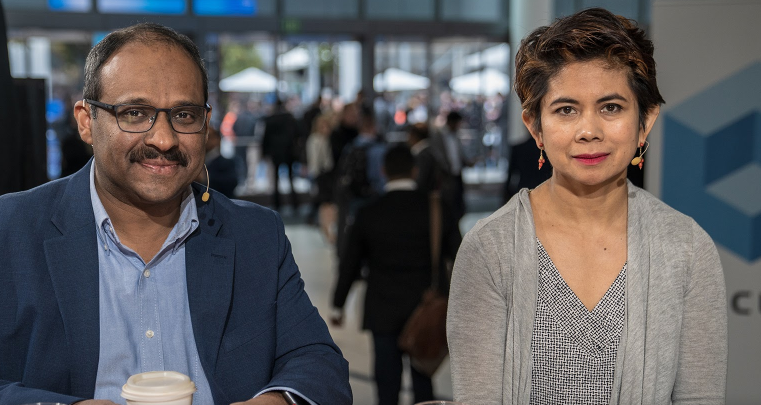 AI
AI
 AI
AI
 AI
AI
Are machine-learning and artificial-intelligence models ready for prime time? Can organizations let them loose and allow intelligent technologies to act on their behalf, making decisions that affect customers?
A special team at IBM Corp. is tuning the educated-guess engine that is a predictive-analytics model. It wants to up the educated factor, reduce the guess factor, and lessen risk.
“You’ve got to go beyond model building to: How do you operationalize this model? How do you deploy these models at scale? How do I define workload-management policies for these models?” said John Thomas (pictured, left), distinguished engineer and director, IBM Analytics, and Data Science Elite Team at IBM.
The Data Science Elite Team assists clients along their AI journey. It is working with JPMorgan Chase Bank, N.A. to improve models used in financial transactions.
Thomas and Elenita Elinon (pictured, right), executive director of quantitative research at JPMorgan, spoke with John Furrier (@furrier) and Dave Vellante (@dvellante), co-hosts of theCUBE, SiliconANGLE Media’s mobile livestreaming studio, during the IBM Think event in San Francisco. They discussed how the Data Science Elite team is helping JPMorgan reduce model risk. (* Disclosure below.)
Financial institutions like JPMorgan live or die by managing all types of risks. These days, the company faces a new type of risk: model risk. Its quantitative research team is building a platform called Morpheus to help reduce model risk in trading and other areas.
“We want to make sure that as these trades are getting booked from day to day, we understand which ones are risky. And we flag those,” Elinon said. IBM and JPMorgan are working on potential uses of machine learning to help stave off losses.
Morpheus is tied into the risk-management systems in the investment bank, Elinon explained. “We’re actually running the same exact code that’s pricing these trades. And what that brings is the ability to really understand pretty much the full-stack trace of what’s going into the price of a trade,” she said.
Through “model explainability,” Morpheus can see just how a model came to a conclusion. It can detect bias or faults in the model and correct them.
Precisely monitoring a model helps the company comply with standards and still gain a competitive advantage, Elinon pointed out. It hits a sweet spot between managing risk and scoring profitable AI insights.
Watch the complete video interview below, and be sure to check out more of SiliconANGLE’s and theCUBE’s coverage of the IBM Think event. (* Disclosure: IBM Corp. sponsored this segment of theCUBE. Neither IBM nor other sponsors have editorial control over content on theCUBE or SiliconANGLE.)
Support our mission to keep content open and free by engaging with theCUBE community. Join theCUBE’s Alumni Trust Network, where technology leaders connect, share intelligence and create opportunities.
Founded by tech visionaries John Furrier and Dave Vellante, SiliconANGLE Media has built a dynamic ecosystem of industry-leading digital media brands that reach 15+ million elite tech professionals. Our new proprietary theCUBE AI Video Cloud is breaking ground in audience interaction, leveraging theCUBEai.com neural network to help technology companies make data-driven decisions and stay at the forefront of industry conversations.